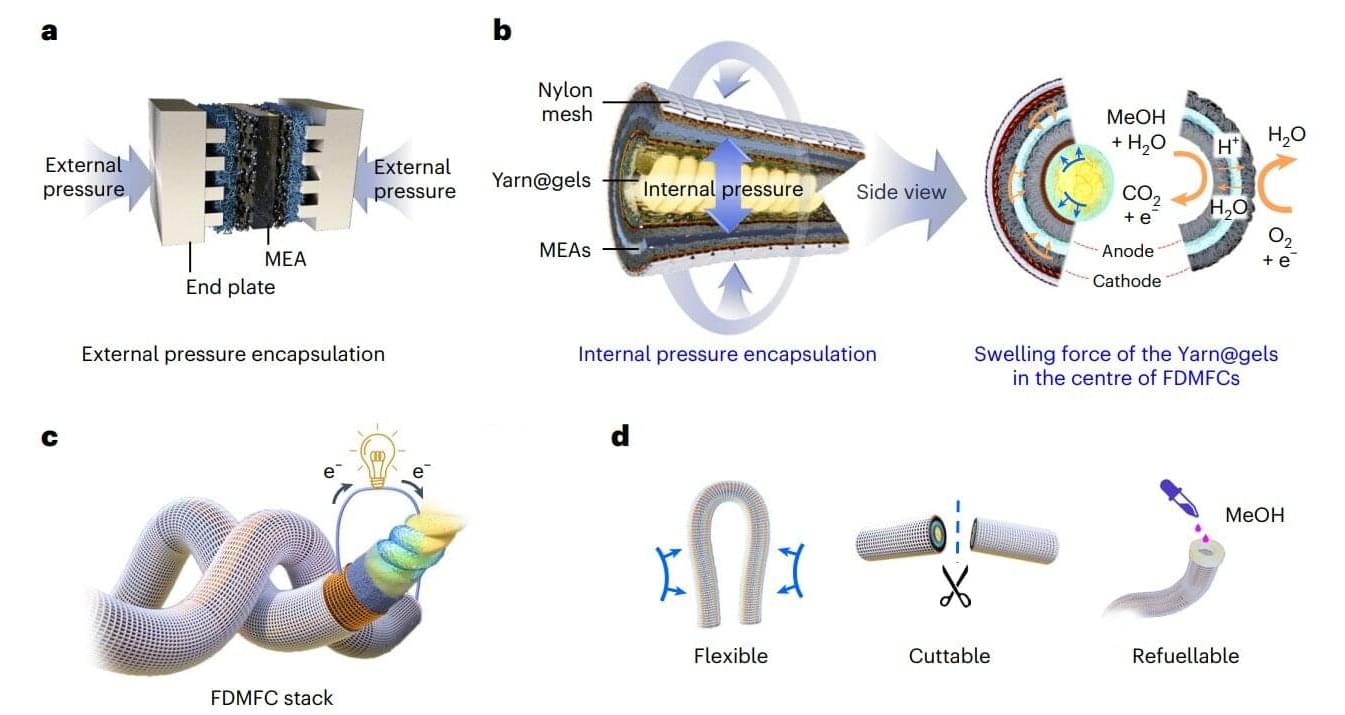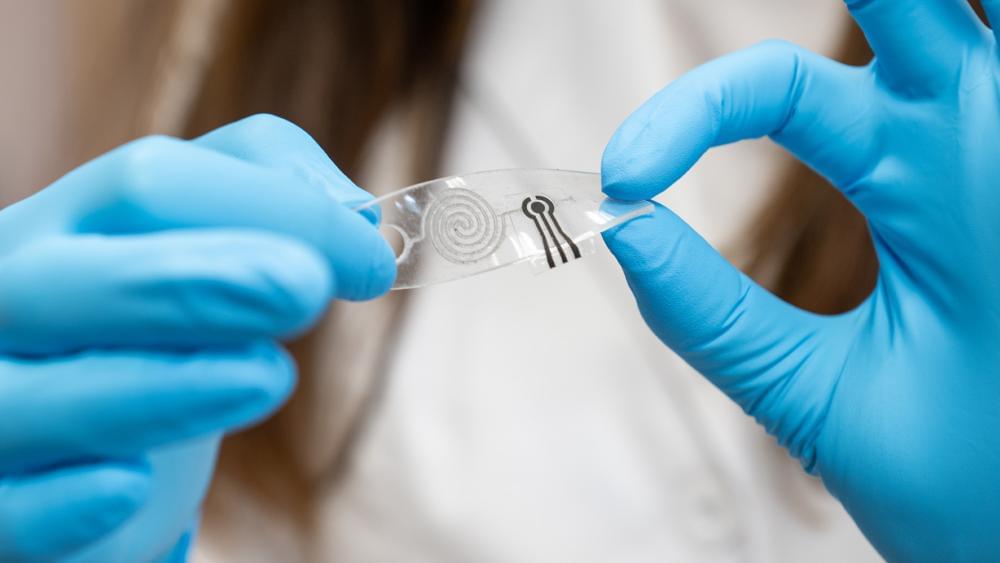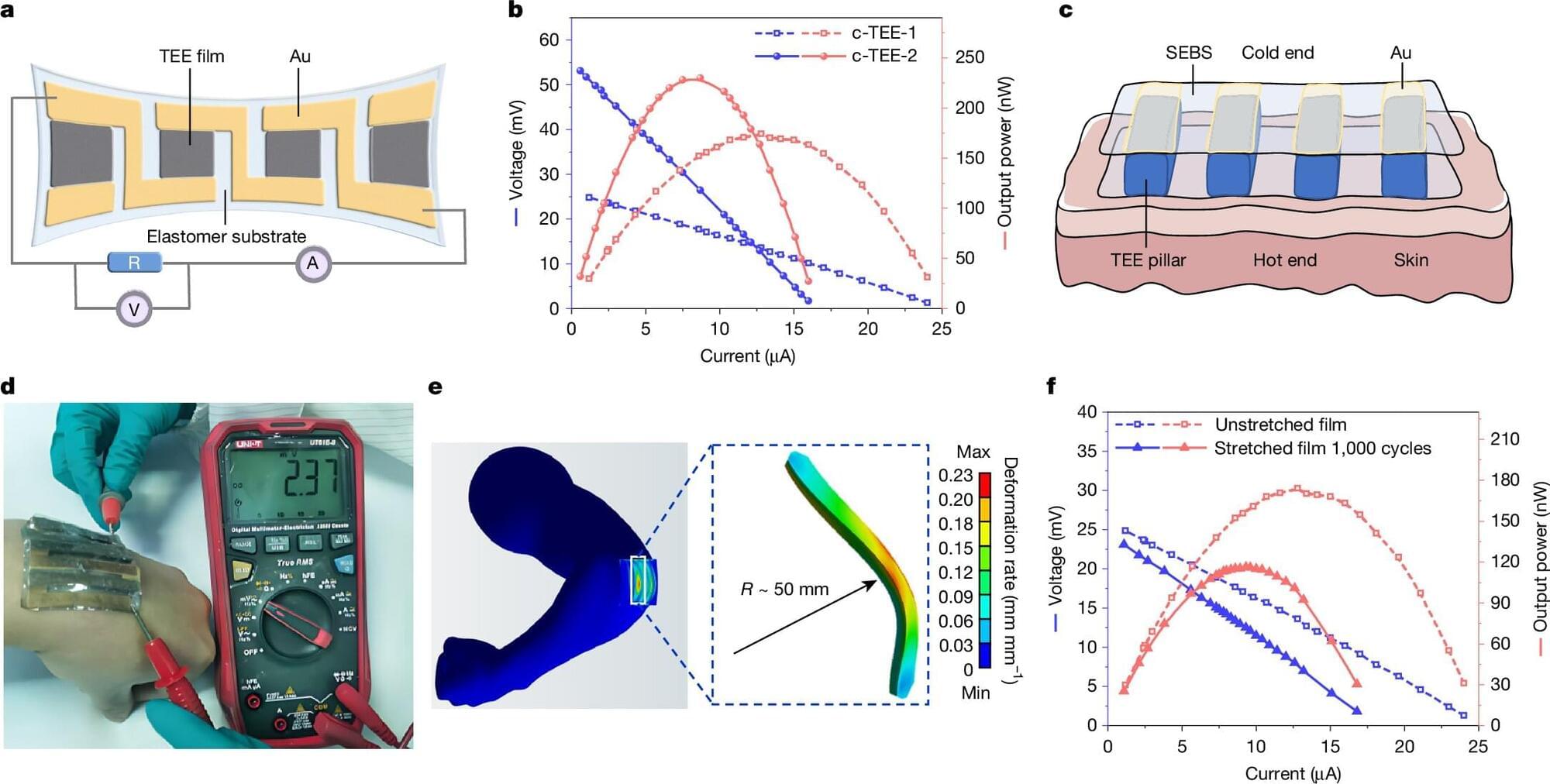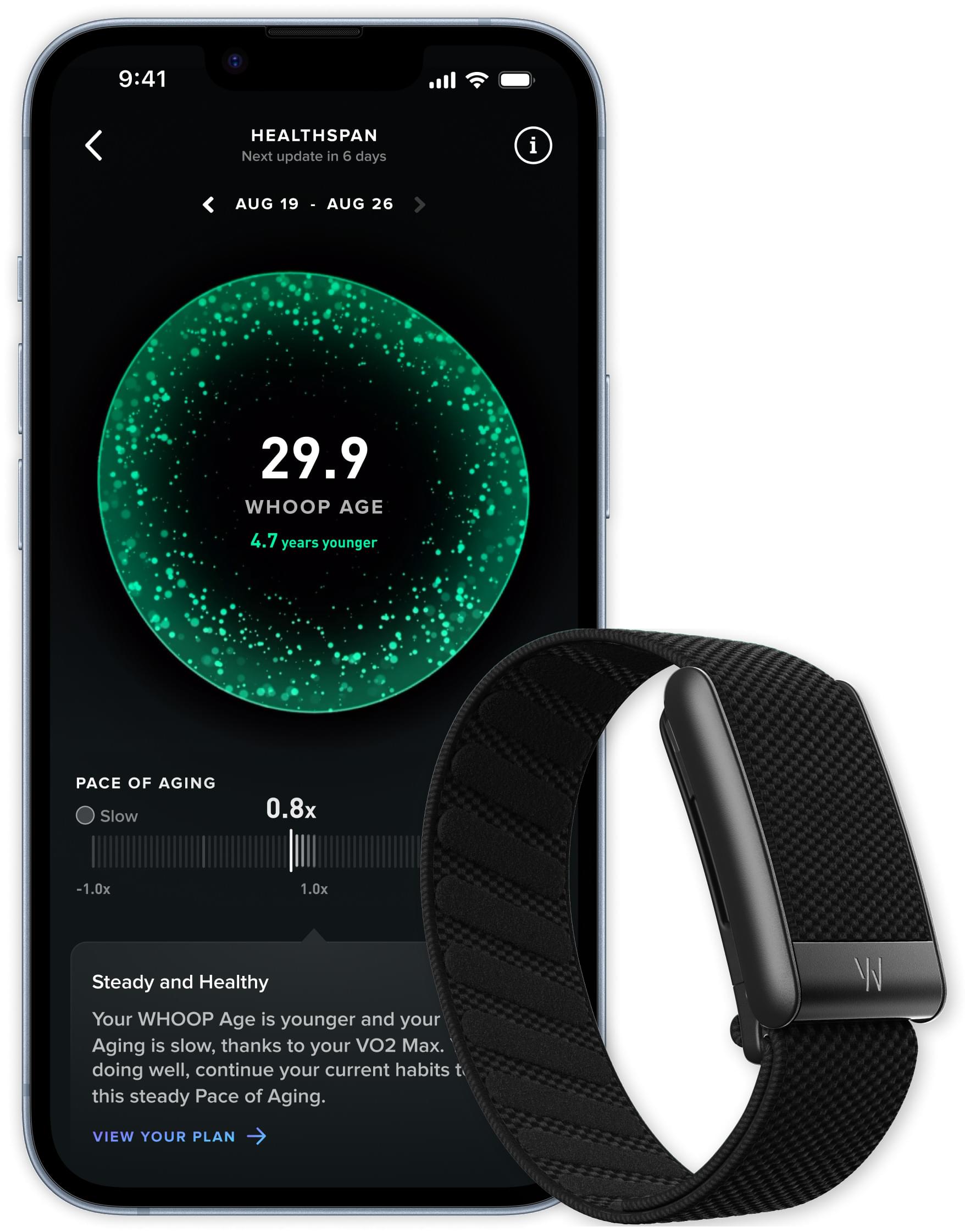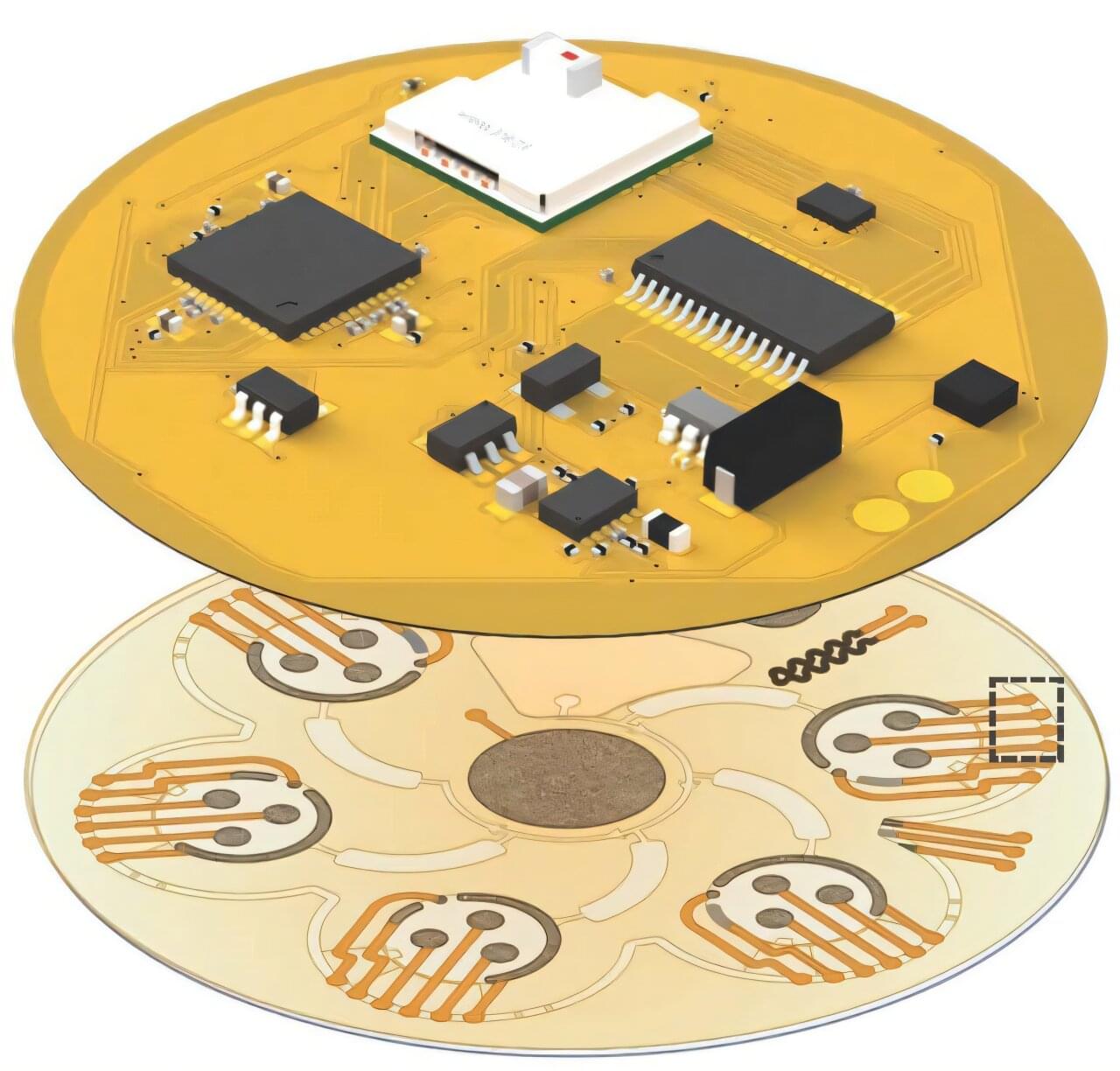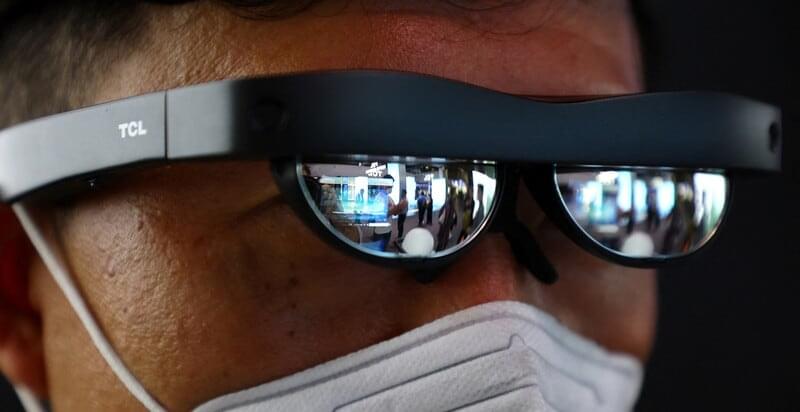Cotton-based fiber fuel cells can now convert methanol into electricity while sustaining peak power density through 2,000 continuous flex cycles. This breakthrough paves the way for safe, high-performance power sources for flexible electronics and wearable devices.
Researchers at Soochow University developed fiber-shaped direct methanol fuel cells (FDMFCs) using gel-encapsulated woven yarns. These “Yarn@gels” employ an adaptive internal pressure strategy, where the natural swelling of cotton fibers within the gel matrix generates pressure to keep the cell components tightly bound, removing the need for bulky, rigid parts. The result is a fuel cell that is flexible, cuttable, water-resistant, and quick to refuel in just one minute.
The findings of this study are published in Nature Materials.
